
Wednesday, March 21st, 2007

Posted by Overseas Property Mall in
International Real Estate Trends,
Malaysian Property,
South-East-Asia Property Malaysia´s housing property market is taking a breather due to the current excess supply and cautious consumer sentiment, analysts say, citing hikes in fuel prices and interest rates last year as dampening the enthusiasm of property buyers.
According to government data, the overhang in the residential market increased to 22,185 units in the first half of 2006 from 15,083 units in the same period a year earlier.
Housing developers said the soft market has continued right up to the end of 2006. The Malaysian Developers Council says it expects the industry to show negative growth in the fourth quarter of 2006, continuing the weak trend of the last eight quarters.
Outlook
Housing developers and real estate agents have mixed views on the outlook of the property market. Housing developers are bracing for a softer market with continued slow take-up rates and flat earnings. A recent survey by the Real Estate And Housing Developers´ Association Malaysia (Rehda) shows a general decline in the earnings of property players. The study on the housing sector conducted during the first half of 2006 said the hike in interest rates as well as stricter consumer financing criteria by banks is hampering the industry´s growth.
Rehda deputy president Datuk Michael K.C. Yam said: “Overall, respondents expressed a neutral outlook towards the property market until year-end, with a small percentage expressing pessimism.” He expects the property market to be more stable with the continued focus on residential development. “In Penang and Kuala Lumpur, developers are likely to focus on mixed and higher-end market with renewed interests in commercial and mixed development project,” he said.
Yam, who is also managing director of property group Sunrise Bhd, said the local industry is likely to be skewed toward residential properties. Analysts said the current oversupply of residential properties has not occurred across the board as take-up rates continue to be strong in prime and established locations.
Demand in the high-end and niche sector is getting bullish and is expected to continue flourishing after the government in December 2006 eased rules on foreign ownership of residential properties. Analysts said buyers need to pick their properties carefully, noting that the most important factor for the success of housing investment is location. The sought after projects are those in growth centres such as the Klang Valley and Penang.
In the Klang Valey, the bluechip areas include Bangsar, Damansara Heights, Mont´Kiara and Bandar Utama. Developers such as Sunrise, S P Setia and Mah Sing group, which are focused in the Klang Valley, are not likely to face problems in selling their properties. Demand for high-end serviced apartments and well-located houses for investment and to rent has also been driven by the large number of expatriates working in Kuala Lumpur.
Real estate agents said rental rates chargeable in Kuala Lumpur are comparable with other major cities worldwide. New off the plan properties in Kuala Lumpur are being sold to international property developers with guaranteed rental yields of between six and ten per cent. Apart from Kuala Lumpur, property investment opportunities are abundant in growth centres in Penang and Johor as well as tourism areas where rental rates are also impressive. Despite their neutral property outlook for this year, analysts believe high-end developers will continue to report robust earnings.
“Those with a focus on high-end segment such as IGB Corp Bhd, Sunrise Bhd and E&O Property Development Bhd have seen significant earnings growth this year, while the ones with focus on the mass market, such as MK Land Holdings Bhd and LBS Bina Group Bhd, have seen earnings down sharply due to poor sales,” OSK Investment Research said. Analysts said the government´s easing of foreign ownership rules for houses worth more than RM250,000 will also help boost sales in the high-end market.
Second Finance Minister Tan Sri Nor Mohamed Yakcop was reported as saying that the government is implementing the new policy in line with the “Malaysia: My Second Home” programme. Malaysia is increasingly popular as a tourist destination, especially with the government´s ongoing campaign during Visit Malaysia Year 2007.
The tourist attraction and appeal of the country — with a stable government and economy — has spawned a secondary holiday home market, bolstering the long-term investment prospects of the property market.
There is a wide range of properties available for foreigners looking for second homes in exotic locations in the country. There are also other positive factors: The Malaysian ringgit is cheap when compared to the US dollar, Euro or British pound. Also international buyers can get more value for their real
estate investment in Malaysia.
Malaysian property is therefore regarded as an exceptional choice for international investors over the medium term because the real estate industry has tremendous growth potential, analysts said.
Meanwhile, Deputy Prime Minister Datuk Seri Najib Razak expects the property market to grow in the first three months of 2007, boosted by the implementation of the Ninth Malaysia Plan (9MP), a better stock market outlook and the manageable interest rate.
“Based on the analysis done by various parties, it is expected that the property sector will expand. The implementation of the projects under the 9MP will contribute to the growth of the property sector,” the deputy PM said.
He noted that if the domestic stock market continues to improve, the property market should also move upward in tandem. Najib also said that with the interest rates for loans at a reasonable level, financial institutions can provide good financing packages for homebuyers.
Rehda president Ng Seing Liong said consumers appear to be more confident about the property market because prices have stabilised.
Government Regulations
The Malaysian government has introduced major changes to rules on foreign ownership of property. Foreigners can purchase residential properties valued above RM250,000 a unit without the Foreign Investment Committee´s approval from Dec 21, 2006 onwards. On Dec 20, the Prime Minister´s Department said in a statement that there would no longer be a limit to the number of residential properties that foreigners can own or any conditions upon their usage.
The move was to encourage foreign investors to purchase high-end residential properties, increase the inflow of foreign currency as well as spur the development of the property and construction sectors, it added. The new rules are a major change to previous regulations relating to foreign ownership of property.
Apart from the requirement to get FIC approval for purchases above RM250,000, foreigners were previously only allowed to buy properties for their own use. They could not hold these for investment purposes. The housing industry is also receiving indirect support from the government´s promotion of “Malaysia: My Second Home Programme”. The programme allows people from all over the world who fulfil certain criteria, to stay in the country as long as possible on a social visit pass with a multiple entry visa.
The Social Visit Pass is initially for a period of ten years depending on the validity of the applicants passport and is renewable. The programme is open to all citizens of countries recognized by Malaysia regardless of race, religion, gender or age. Applicants are allowed to bring along their spouse and children (provided they are below 18 years of age and unmarried).
Source: Asia Property Report - Bernard Lim
 "For next year, we are targeting up to 10 per cent. We are pretty strong in commercial development," PPB senior general manager Mak Hong Seng said at a media preview of its "D'Heron at the Lakes" bungalows in Putrajaya yesterday.
"For next year, we are targeting up to 10 per cent. We are pretty strong in commercial development," PPB senior general manager Mak Hong Seng said at a media preview of its "D'Heron at the Lakes" bungalows in Putrajaya yesterday. External products and services including accommodation, education, medical as well as vehicle services will also be packaged into this programme.
External products and services including accommodation, education, medical as well as vehicle services will also be packaged into this programme.
 Wednesday, March 21st, 2007
Wednesday, March 21st, 2007  Posted by Overseas Property Mall in
Posted by Overseas Property Mall in 






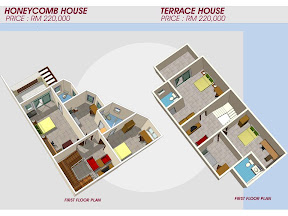
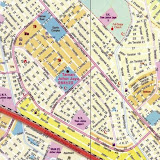


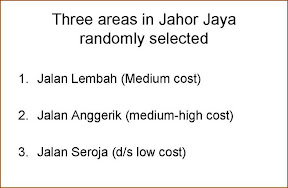

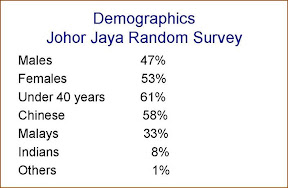

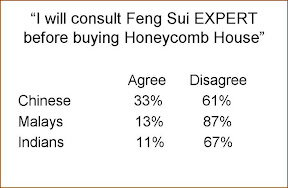



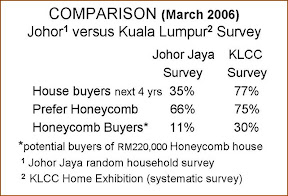

 Cash-rich Indians, including high-profile businessmen and film stars, have found a new property market in Malaysia. Wealthy Indians are investing heavily in residential properties in Kuala Lumpur and other cities after the Malaysian government relaxed rules regarding foreign ownership of property in December 2006.
Cash-rich Indians, including high-profile businessmen and film stars, have found a new property market in Malaysia. Wealthy Indians are investing heavily in residential properties in Kuala Lumpur and other cities after the Malaysian government relaxed rules regarding foreign ownership of property in December 2006.